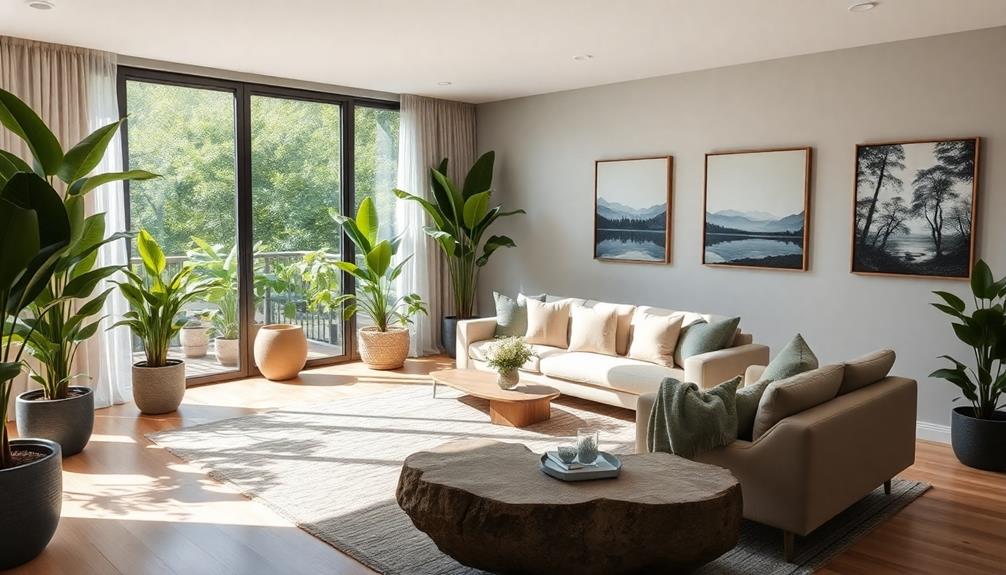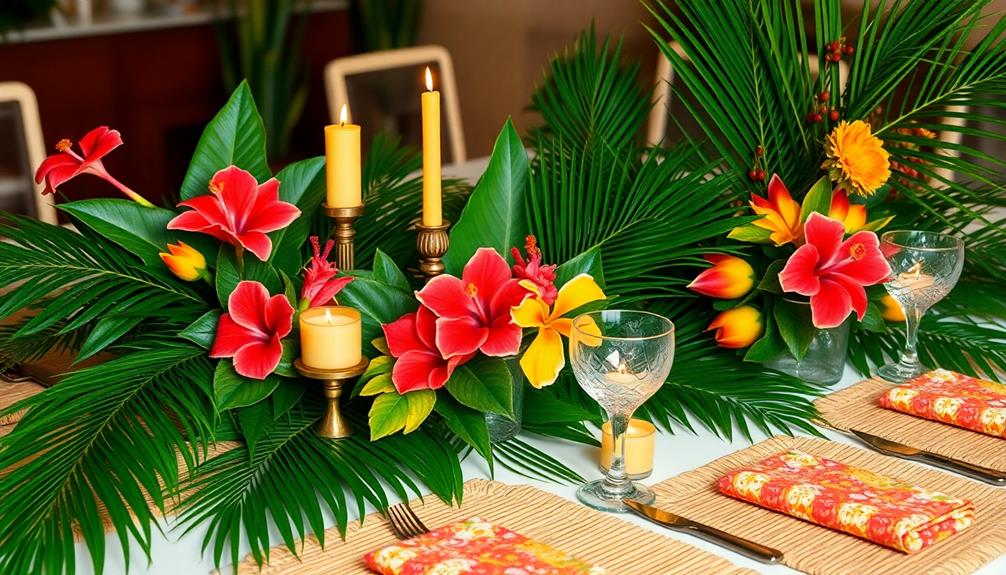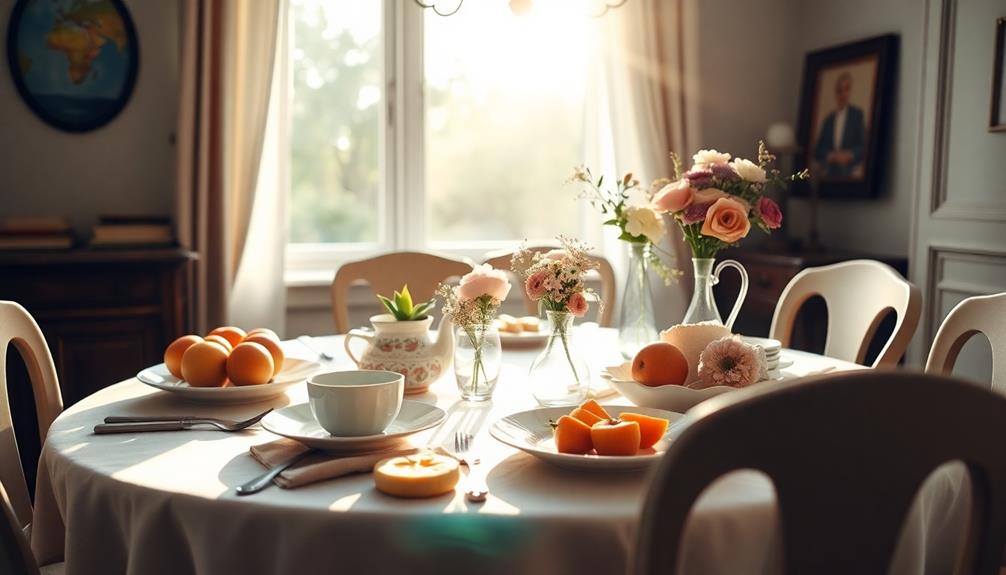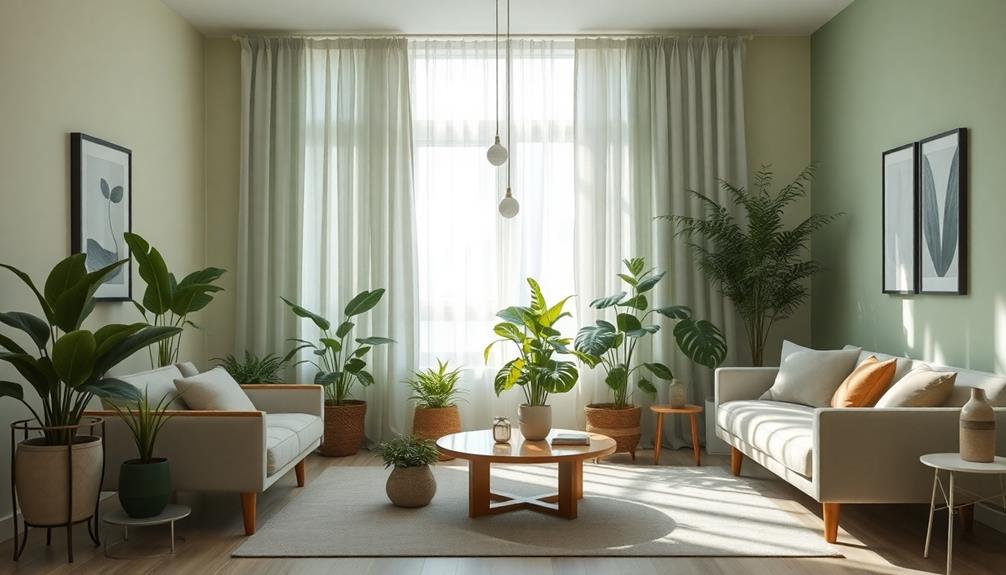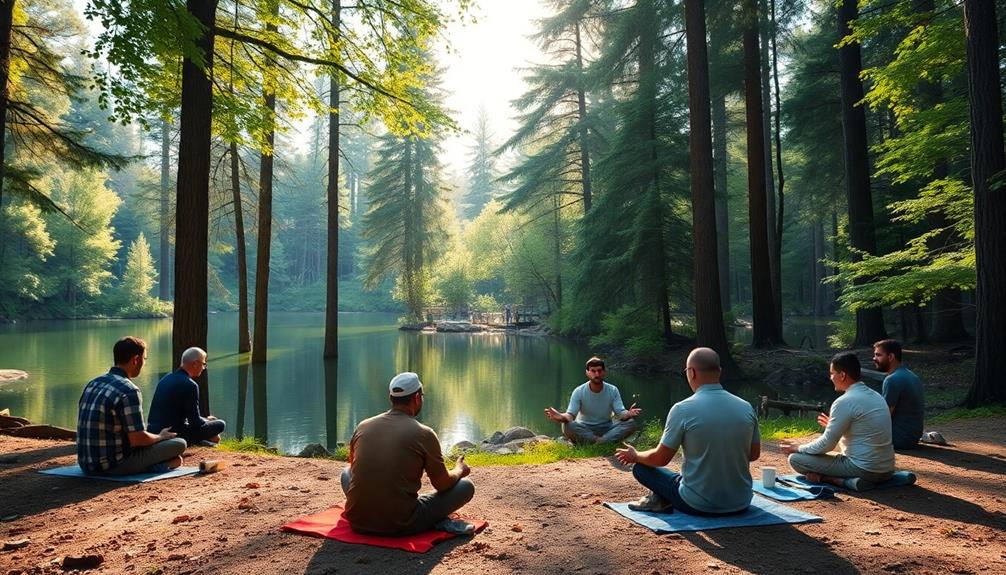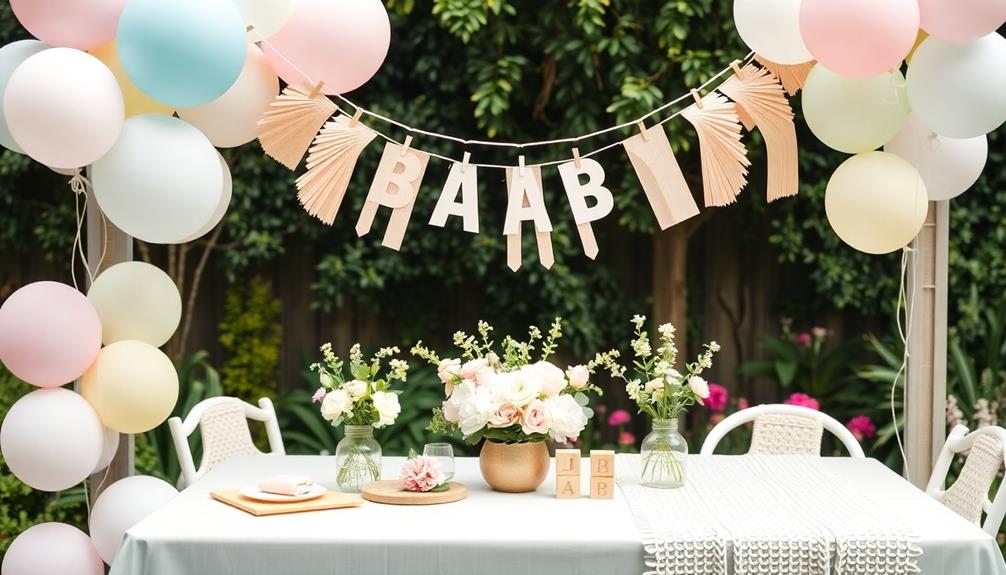To Feng Shui your space for a harmonious and stylish home, start by ensuring your entrance is clutter-free, inviting positive energy in. Arrange your furniture to promote conversation and avoid blocking pathways; larger pieces should face the entrance for a commanding presence. Choose calming colors like blues and greens, and mix textures for an inviting atmosphere. Use multiple light sources to create warmth and comfort, while incorporating natural elements like plants for vibrancy. Finally, personalize your decor with meaningful items to enhance emotional connection. Interested in further tips on mastering this ancient art? You won't want to miss what comes next.
Key Takeaways
- Clear your entrance of clutter to promote smooth energy flow and invite opportunities into your home.
- Arrange furniture to create a conversational layout, enhancing connection and energy circulation among occupants.
- Choose calming colors and diverse textures to evoke desired emotions and create a welcoming atmosphere.
- Utilize layered lighting with multiple sources to establish a warm ambiance and avoid harshness.
- Incorporate personal items and unique decor to foster emotional connections and reflect your personal style.
Understanding Feng Shui Basics
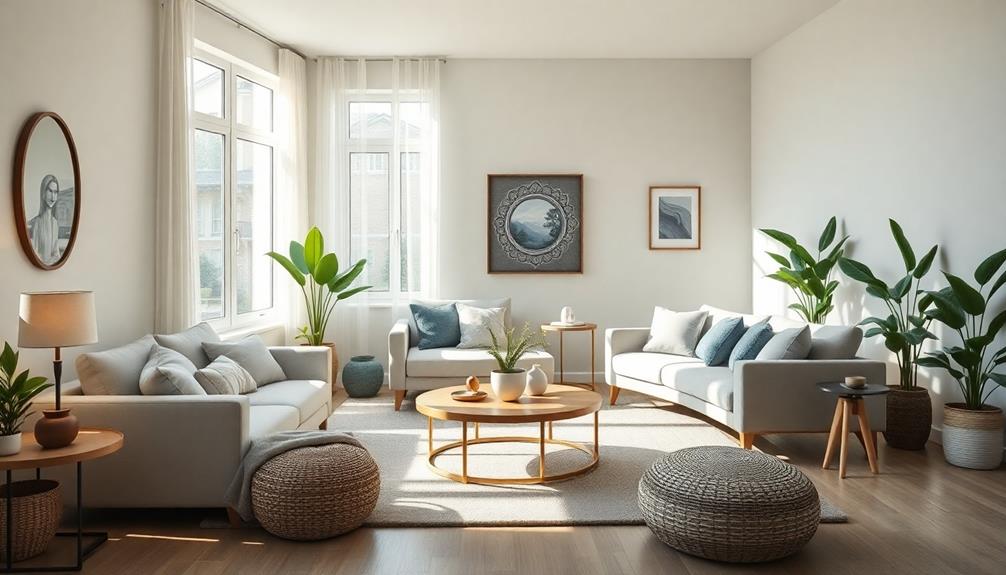
When you explore the basics of Feng Shui, you'll discover it's more than just arranging furniture; it's an ancient philosophy focused on creating harmony in your space. The key to achieving this harmonious living lies in understanding energy flow, or chi, which influences your health, happiness, and prosperity.
To enhance this flow, you can use the Bagua map, a powerful tool that highlights nine life areas, like career and wealth, guiding you to make targeted improvements. By incorporating elements of Balinese interior design such as natural materials and open spaces, you can further enhance the harmonious energy in your home.
Incorporating natural elements like wood, fire, earth, metal, and water is vital for balancing the energies within your home. Each element brings specific qualities that can be expressed through colors, materials, and decor choices.
Achieving balance also means acknowledging the interplay of Yin and Yang energies—feminine and masculine forces important for emotional and physical well-being.
Decluttering your space and thoughtfully considering the placement of your furniture can greatly promote positive energy. By optimizing your environment, you'll foster a sense of balance and enhance your overall quality of life.
Embrace these Feng Shui basics, and watch as your space transforms into a sanctuary of peace and positivity.
Importance of an Unobstructed Entrance
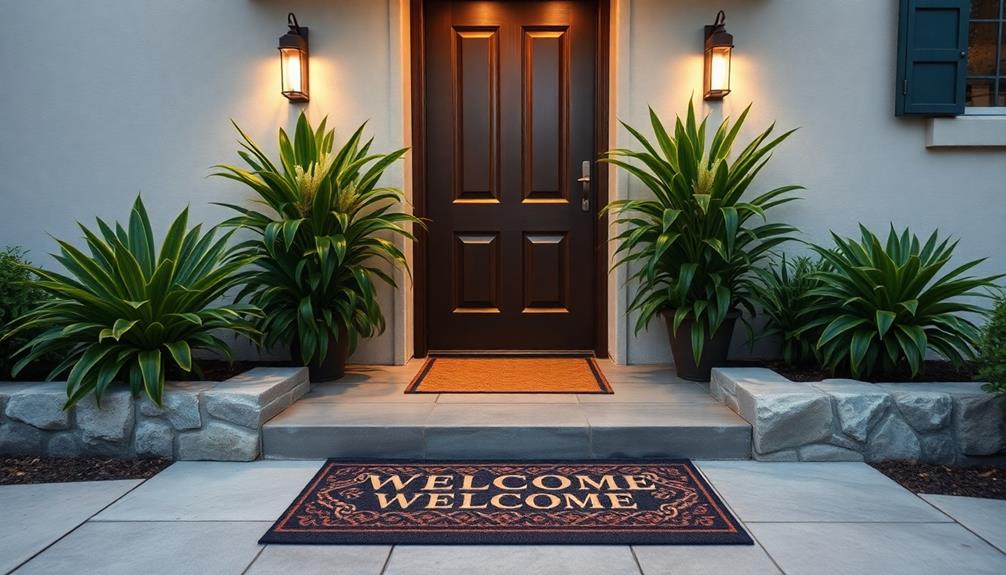
An unobstructed entrance is essential for welcoming positive energy into your home, as it symbolizes the pathways through which opportunities and good fortune flow. Incorporating elements like Indonesian decorative pillows can further enhance the inviting atmosphere of your entryway with their vibrant colors and intricate patterns.
To guarantee a smooth energy flow, keep the entryway clear of clutter like shoes and bags. Implement organized storage solutions to maintain accessibility and promote positivity. Regularly clean and maintain this space; incorporating bright lighting not only enhances the welcoming atmosphere but also allows energy to gather effectively.
Make certain your doors can open fully (90 degrees) without obstruction, which facilitates unblocked energy flow critical for receiving new opportunities and enhancing communication.
Transform unsightly elements near the entrance into focal points through creative decor; this can markedly improve the perception of space and boost positive energy upon entry.
Furniture Arrangement for Energy Flow
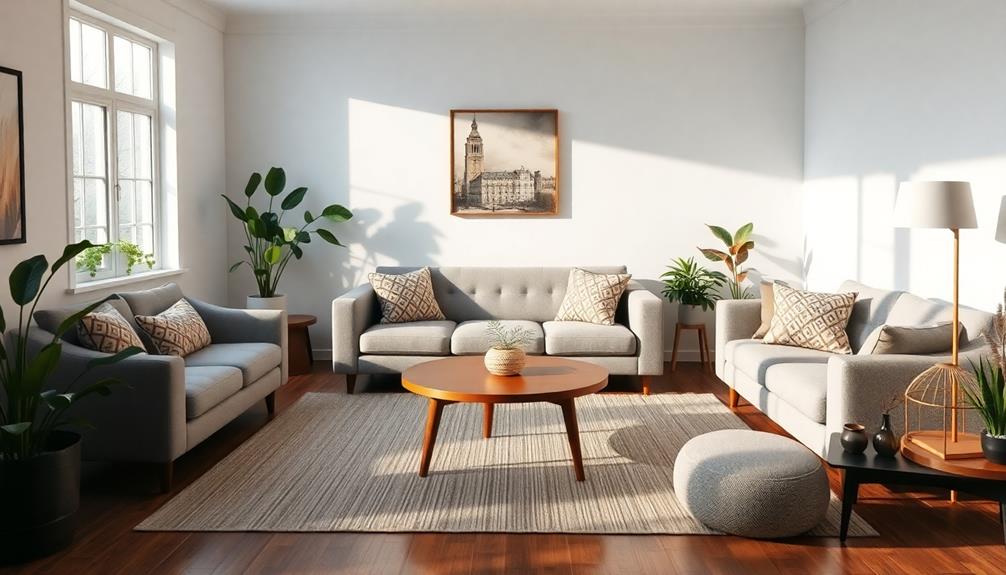
Creating a harmonious flow of energy in your home doesn't stop at the entrance; it continues with the arrangement of your furniture. To enhance energy flow, position larger furniture pieces, like sofas and beds, in commanding positions where they face the entrances. This setup fosters feelings of security and control.
Emphasizing a minimalistic approach can also contribute to a clutter-free environment, which is essential for maintaining positive energy. Avoid blocking pathways with oversized furniture to prevent stagnant energy and guarantee smooth navigation throughout your space. For instance, Scandinavian charm in kid-friendly homes showcases how functional furniture promotes play and relaxation while enhancing aesthetic appeal.
Consider a conversational layout when arranging your seating. This promotes connection and interaction among occupants, creating a sense of community. Opt for diagonal placements to encourage ideal energy flow and add dynamic visual interest.
Incorporating natural elements, such as plants, into your furniture arrangement can promote tranquility and enhance the overall energy of your environment. These elements not only bring life into your space but also contribute to harmonious living.
Choosing the Right Colors and Textures
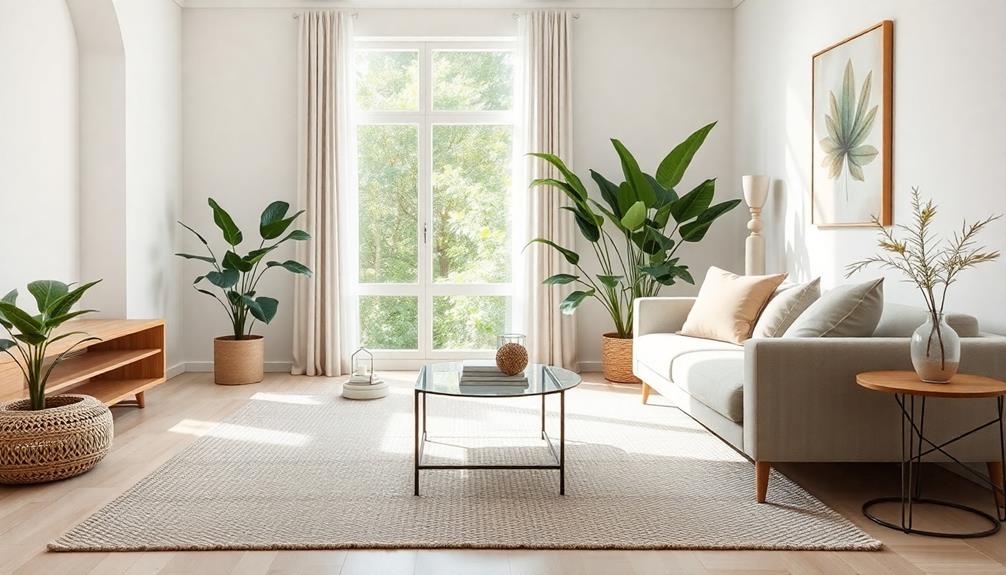
When you're choosing colors for your space, think about how they affect your mood; calming blues and vibrant yellows can set the emotional tone of a room.
For instance, in Balinese indoor-outdoor living, the use of earthy tones combined with vibrant accents can provide a rejuvenating and energizing environment.
Don't forget about texture, as a mix of soft and smooth surfaces adds depth and comfort to your environment.
Together, these elements create a harmonious atmosphere that supports your desired energy flow.
Color Psychology Impact
Your space's color scheme can greatly influence its atmosphere and your mood. Understanding color psychology is key, as colors evoke specific emotional responses. For instance, blue can promote calmness and tranquility, while yellow stimulates happiness and creativity. By using a mix of warm and cool colors, you can create a balanced atmosphere—warm tones encourage social interaction, and cool tones foster relaxation.
Additionally, incorporating elements from coastal color palettes can enhance the overall aesthetic, creating a serene and inviting environment.
Textures also play a vital role in creating visual interest. While focusing on colors, consider how soft fabrics can complement smooth surfaces, enhancing comfort and inviting a sense of coziness. Keep in mind that lighting conditions noticeably affect how colors appear; choose hues that maintain vibrancy under both natural and artificial lighting.
Incorporating accent pieces in contrasting colors can break monotony and add focal points, drawing attention to specific areas. This strategy not only enhances visual appeal but also promotes harmonious living by creating balance throughout your space.
Ultimately, selecting the right colors and textures can transform your environment, making it a reflection of your desired mood and lifestyle.
Texture Variety Importance
A diverse mix of textures can transform a space, making it feel more inviting and dynamic. When you incorporate texture variety—like soft fabrics, smooth surfaces, and natural materials—you add depth and visual interest that enhances your home's overall aesthetic appeal.
Consider how textures can influence the comfort you perceive in a room. Plush cushions and rugs foster a cozy atmosphere, while sleek metals and glass lend a modern feel. Adding elements like traditional artistry through Indonesian decor masks can also enrich the textural variety in your space.
Color and texture work hand-in-hand to evoke emotions. Pair warm tones with soft textures for a nurturing ambiance, or combine bold colors with hard textures to inspire energy and excitement. Textured accent pieces, such as a woven throw or a ceramic vase, can serve as focal points within your decor, drawing the eye and creating a dynamic environment.
The interplay of different textures encourages a harmonious balance, essential for positive energy flow and a sense of well-being. By following Feng Shui principles in designing spaces, you can achieve an atmosphere that not only looks good but feels good too.
Lighting for Ambiance and Comfort
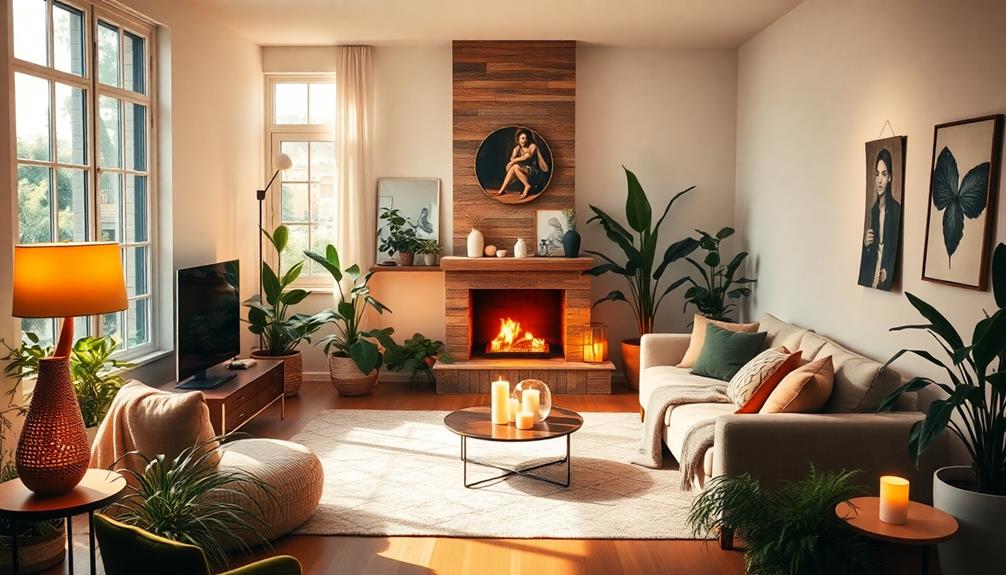
Creating a warm and inviting atmosphere in your home starts with effective lighting choices. Focus on lighting for ambiance by implementing multiple light sources, such as table and floor lamps. This layered lighting effect enhances comfort and avoids the harshness of overhead lights.
Additionally, consider using LED lights, as they can effectively support plant growth and reduce operational costs while providing specific wavelengths that promote a soothing environment for relaxation LED lighting and plant growth. Use soft lighting techniques, like indirect lighting, to promote a cozy feel that encourages relaxation.
To maintain a cohesive look, choose bulbs with consistent color temperatures, ideally between 2700-3000 kelvins, for a soothing ambiance throughout your space. Incorporate task lighting in areas like reading nooks or workspaces, focusing light where it's needed most without sacrificing comfort.
Consider installing dimmer switches to easily adjust the intensity of your lights based on the time of day or your mood. This fosters a versatile environment that adapts to various activities, whether you're winding down for the evening or hosting friends.
Enhancing Each Room's Energy
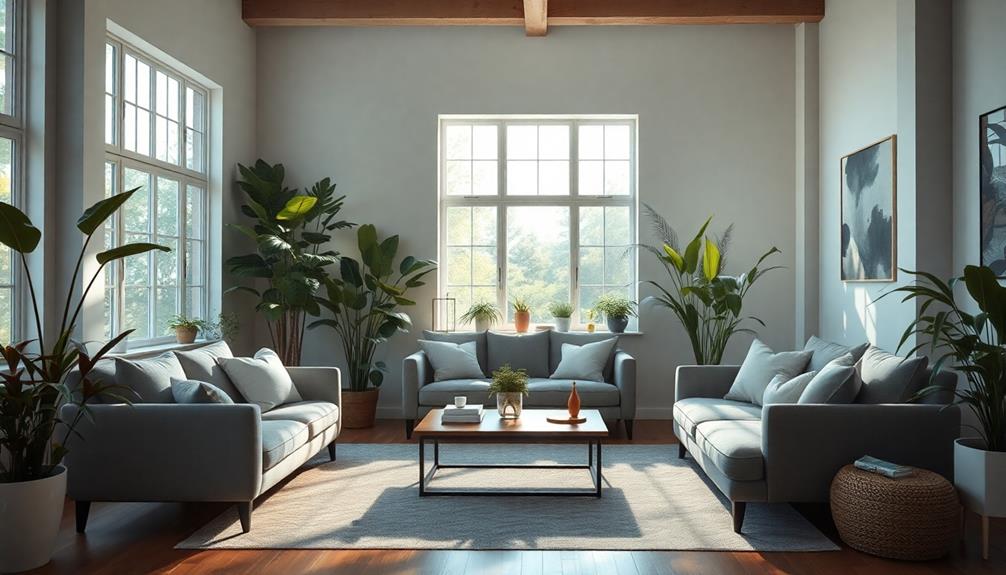
Enhancing the energy of each room in your home can transform your living space into a harmonious sanctuary.
Start with your living room; arrange the furniture to promote conversation and connection, perhaps by incorporating elements of Boho Above Bed Decor. Use soft textures alongside modern pieces to create a cozy yet stylish environment that encourages engagement.
In the bedroom, place your bed against a solid wall in a commanding position. This boosts feelings of safety and supports relaxation. Use calming colors like blues and greens to create a serene atmosphere.
For the kitchen, incorporate natural materials and vibrant plants to promote liveliness and warmth. Make sure your layout is functional and visually inviting to enhance culinary creativity and joy.
When it comes to your home office, position your desk to face the door, increasing productivity and control.
Combine energizing colors with comfortable furniture for a balanced work environment.
Personalization and Emotional Connection
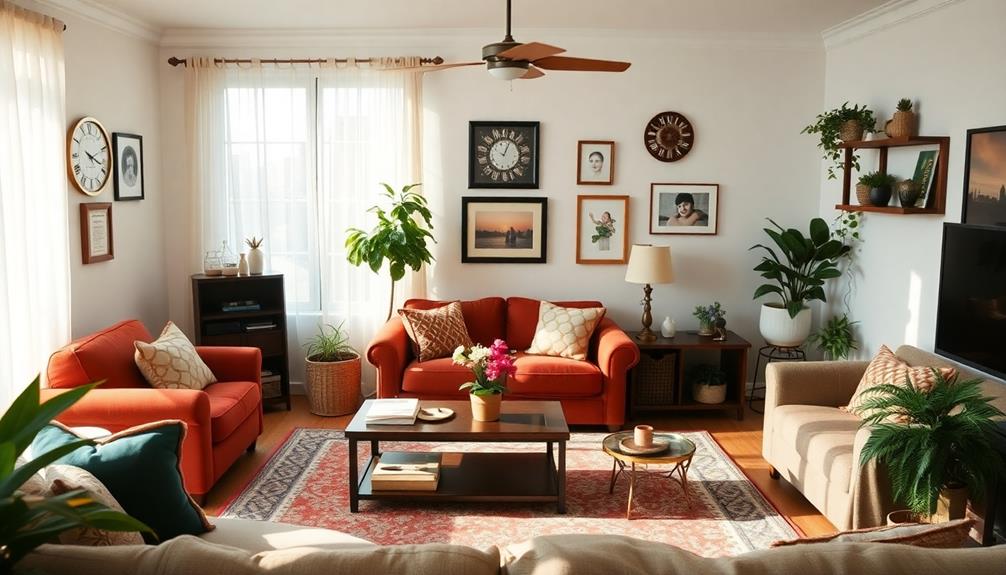
Personalizing your space with items that hold significance—like family heirlooms or unique artwork—deepens your emotional connection to your home. Incorporating elements such as a Face Indonesian Decor Mask can further enrich your environment, showcasing the rich cultural heritage and craftsmanship that resonates with your personal style.
This connection transforms your space into a nurturing environment that promotes overall well-being. By incorporating meaningful items that reflect your individual style, you create a harmonious atmosphere that resonates with your current emotions.
To enhance this personalization, consider these key elements:
- Color and Texture: Choose shades and materials that evoke desired feelings, making your space feel unique and comfortable.
- Sentimental Objects: Display items that tell your story, fostering a sense of belonging.
- Functional Decor: Balance aesthetic appeal with practicality to improve energy flow throughout your home.
Regularly evaluating your decor choices allows you to adapt your space to your lifestyle changes, maintaining that emotional connection.
You'll find that a well-personalized home not only expresses who you're but also contributes to a harmonious energy flow, enhancing your daily experiences. Make your space a reflection of your journey, filled with meaningful items that nurture both your heart and mind.
Frequently Asked Questions
How to Arrange Your Home According to Feng Shui?
To arrange your home according to feng shui, clear clutter from entryways, position key furniture for commanding views, and balance the five elements through decor. This promotes positive energy flow and enhances your living space.
What Is the Best Feng Shui Location for a House?
For the best Feng Shui location, choose a flat terrain with natural elements nearby. Ascertain your house faces south for sunlight, has a clear entrance view, and avoids direct alignment between the front and back doors.
How to Design a House According to Feng Shui?
Imagine your home's a cozy café. To design according to Feng Shui, focus on the Bagua map, declutter, choose appropriately-sized furniture, incorporate the five elements, and keep the energy flowing for harmony and balance.
How to Bring Positive Energy Into Your Home Feng Shui?
To bring positive energy into your home, clear clutter, enhance your entryway, and incorporate plants. Arrange furniture for easy movement and connection, using the Bagua map to focus on specific areas for improvement.
Conclusion
By applying these Feng Shui principles, you can create a home that feels both stylish and harmonious. Imagine walking into a living room where a cozy sofa invites conversation, sunlight dances through the windows, and calming colors promote relaxation. A couple once transformed their cluttered space into a serene sanctuary using these techniques, leading to improved moods and stronger connections. Embrace the art of Feng Shui, and watch your space flourish into a haven of positive energy. Consider incorporating feng shui color combinations such as soothing blues and greens, or warm earth tones to enhance the energy flow in your home. By thoughtfully arranging furniture and decor according to feng shui guidelines, you can create a sense of balance and tranquility in every room. Embracing these principles can lead to a more harmonious and revitalizing living space for you and your loved ones.
